Mar
31
2022
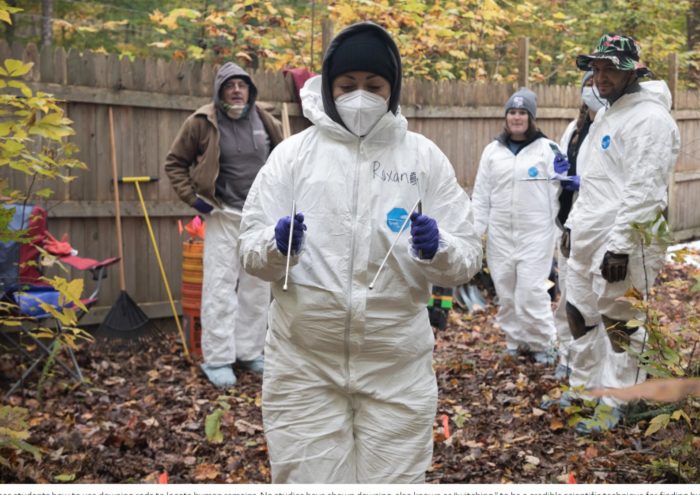 Dowsing is one of those pseudosciences that proves James Randi’s aphorism that such cons are often like “unsinkable rubber ducks” – no matter how often you push them down, they keep coming back. Here is yet another story of a scientist falling for dowsing and spreading this nonsense to students, law enforcement, and even in the courtroom. Arpad Voss is a forensic scientist with a PhD in anthropology. He is now the latest cautionary tale demonstrating that being a legitimate scientist is not in itself protection from also falling for pseudoscience.
Dowsing is one of those pseudosciences that proves James Randi’s aphorism that such cons are often like “unsinkable rubber ducks” – no matter how often you push them down, they keep coming back. Here is yet another story of a scientist falling for dowsing and spreading this nonsense to students, law enforcement, and even in the courtroom. Arpad Voss is a forensic scientist with a PhD in anthropology. He is now the latest cautionary tale demonstrating that being a legitimate scientist is not in itself protection from also falling for pseudoscience.
He follows a long pedigree of such cautionary tales – two-time Nobel Laureate Linus Pauling, who was a brilliant chemist but not a doctor, convinced himself that high doses of Vitamin C was a powerful cure. Luc Montagnier, also a Nobel Laureate for his work on discovering HIV, fell for one of the rankest of medical pseudosciences, homeopathy. Psychologists Targ and Puthoff famously fell for an ESP scam, unable to leverage their scientific chops to detect the deception. Neuroscience researcher Steven Laureys fell for facilitated communication, because he was simply unfamiliar with the phenomenon.
It happens over and over again – scientists assume that being an accomplished scientist shields them from self-deception and pseudoscience. It doesn’t, for at least two very good reasons. First, the practice of science involves at least two general types of knowledge. There is technical/factual knowledge, the ability to carry out an experiment, to perform statistical analysis, operate technical machinery, and specific topic expertise. But there is also philosophical/critical thinking knowledge, understanding the underlying philosophy of science, mechanisms of deception, and how science can be perverted and slide into pseudoscience. The world is full of people who have the former skill sets but lack the latter. This is why, for example, creationist Duane Gish was able to go around the country debating evolutionary scientists and get the rhetorical better of them. The scientists naively thought they only needed to understand the science of evolution, but really they also needed to understand the pseudoscience of creationism.
Continue Reading »
Mar
29
2022
 As the number of confirmed exoplanets grows (we just passed the 5,000 mark) attention is turning toward determining more about these planets orbiting other stars. The most compelling question, of course, is whether or not they are capable of containing life, and if they actually do have life. If a planet did sport life around a star tens or hundreds of light years away, how would we know? There are two basic approaches – looking for technosignatures and biosignatures. A technosignature is a sign of advanced technology, like heat radiating from a massive structure. But this also requires an advanced technological civilization, not just life. Biosignatures are just signs of life, even simple bacteria.
As the number of confirmed exoplanets grows (we just passed the 5,000 mark) attention is turning toward determining more about these planets orbiting other stars. The most compelling question, of course, is whether or not they are capable of containing life, and if they actually do have life. If a planet did sport life around a star tens or hundreds of light years away, how would we know? There are two basic approaches – looking for technosignatures and biosignatures. A technosignature is a sign of advanced technology, like heat radiating from a massive structure. But this also requires an advanced technological civilization, not just life. Biosignatures are just signs of life, even simple bacteria.
There are two primary biosignatures that scientists are currently interested in, oxygen and methane. These two gases have in common that they are produced by the biochemical activity of life (at least on Earth) and they are highly reactive and therefore short-lived in an atmosphere. Therefore if they exist they are being constantly replenished, and one potential source is life.
For completeness you may remember the possible detection of phosphene in the upper atmosphere of Venus. Phosphene is another potential biosignature, raising the possibility of critters living in the clouds of Venus. But later analysis concluded that the detection was likely a mistake, the signal coming from another more common source not indicative of life.
All of these potential biosignatures have another thing in common – they can be released by non-living sources. This makes them problematic as biosignatures. Just detecting oxygen is not enough, we can’t pop the corks yet. Further analysis is necessary to determine the likelihood of a biological vs non-biological source for any of these putative biosignatures, and that is where recent work has been focusing. A 2018 paper, for example, examines the characteristics of an oxygen signature that will help us rule out a “false positive” biosignature using spectrographic, photometric, and time-dependent analysis.
Continue Reading »
Mar
25
2022
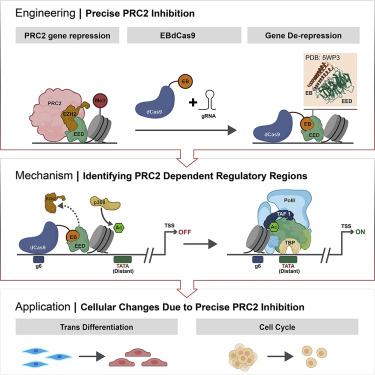 Last year I wrote about CRISPR On-Off – this is a system for using the genetic modification tool, CRISPR, in order to turn the expression of a gene off and then back on again, without altering the gene itself. Now researchers have published a similar application of CRISPR, using a different mechanism to turn on the expression of silenced genes. Their technique shows the power of CRISPR as a modifiable platform. The research also used AI to design the new system, again showing how artificial intelligence is being used to dramatically speed up the pace of research.
Last year I wrote about CRISPR On-Off – this is a system for using the genetic modification tool, CRISPR, in order to turn the expression of a gene off and then back on again, without altering the gene itself. Now researchers have published a similar application of CRISPR, using a different mechanism to turn on the expression of silenced genes. Their technique shows the power of CRISPR as a modifiable platform. The research also used AI to design the new system, again showing how artificial intelligence is being used to dramatically speed up the pace of research.
The new technique also uses CRISPR (Clustered regularly interspaced short palindromic repeats), which was derived from bacteria that use it as part of their immunity against viruses. CRISPR is like a carrier, which can be attached to a specific stretch of DNA. It will then find that stretch of DNA within a genome and target it. CRISPR can also be attached to a variety of proteins, most famously CAS9, which can then perform some function when it gets to its target. CAS9 is a DNA splicer, so a CRISPR-CAS9 system can target a desired stretch of DNA and splice it. This can be used to disrupt a gene, or it can be used to create a location for the insertion of a new gene or gene modification, which requires a separate process involving the DNA repair mechanism.
The CRISPR system dramatically reduced the cost and time necessary to make alterations to a genome. The technology is also rapidly progressing, because research using CRISPR is now available to many more labs and researchers. There are other payloads other than CAS9 that can be used, for example. Researchers are also learning how to tweak the speed vs accuracy of CRISPR.
Continue Reading »
Mar
24
2022
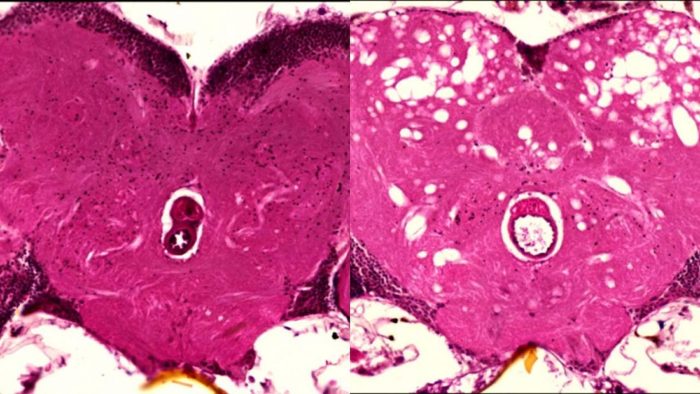 As I have discussed many times on this blog, organic farming is an ideological approach to farming that is ultimately harmful to the environment and agriculture. This is because it is not evidence-based, but rather is based on a dubious philosophy, the notion that methods that are more “natural” (a poorly defined concept) are inherently safer and superior to methods that are “artificial”. The term “organic” is mainly used as a marketing term to create a health halo around products that allow for charging an ideological premium, without any proven benefit.
As I have discussed many times on this blog, organic farming is an ideological approach to farming that is ultimately harmful to the environment and agriculture. This is because it is not evidence-based, but rather is based on a dubious philosophy, the notion that methods that are more “natural” (a poorly defined concept) are inherently safer and superior to methods that are “artificial”. The term “organic” is mainly used as a marketing term to create a health halo around products that allow for charging an ideological premium, without any proven benefit.
One aspect of organic farming is that it does not allow for the use of synthetic pesticides, but does allow for the use of natural pesticides. Conceptually this makes no scientific sense – substances which occur in nature can be deadly poisons, just as synthetic substances can. The degree to which something is “natural” is completely orthogonal to how safe or toxic it is to various domains of life. Using natural as a proxy for safety is therefore a completely unscientific and nonsensical approach, but that is organic farming.
Pest management is one of the greatest challenges of modern agriculture. The problem comes from the fact that we are packing in rows and rows of the same crop. That presents an attractive food source to anything that can eat it. Pests can be devastating to crops, and so keeping them under control is necessary for successful agriculture. There are a number of methods that can be used, and experts generally recommend what is called integrated pest management (IPM), which uses multiple methods to reduce pest burden on crops. IPM includes the judicious use of pesticides where necessary, and both conventional and organic farming uses pesticides with organic farming limiting itself to those it deems “natural”.
Continue Reading »
Mar
22
2022

Spending extended time in space presents many challenges, on of which is prolonged microgravity. Artificial gravity through rotation is not yet practical. We may see rotating space stations this century, but not space ships, and there are no practical concepts for how to produce artificial gravity on the Moon or Mars. NASA’s approach to this and other similar problems is mitigation – they can’t prevent the problem, so learn to deal with its effects. On the ISS, for example, astronauts undergo a daily resistance training regimen to stave off bone and muscle loss.
Exercise alone, however, is not enough to prevent bone loss (osteopenia), which is about 1-2% per month on average. This may be acceptable for a several month stint on the ISS, but NASA is planning a 3 years mission to Mars in the 2030s. That would entail about 10 months travel time to and from Mars, and about a year on Mars itself. That’s 20 months in microgravity and one year in Mars gravity, which is 38% of Earth’s. This is why NASA is investing in advanced space ship concepts – “get there fast” is their primary strategy for mitigating the risks of deep space travel.
Another category of mitigation measures is medical. If we can understand the physiology of microgravity, then perhaps we can develop medical interventions to compensate. For example, they are developing a negative pressure body suit to essentially suck fluids into the lower extremities, to simulate the effects of gravity and prevent some of the negative effects of fluid redistribution in long term microgravity, such as negative effects on the eyes.
Continue Reading »
Mar
21
2022
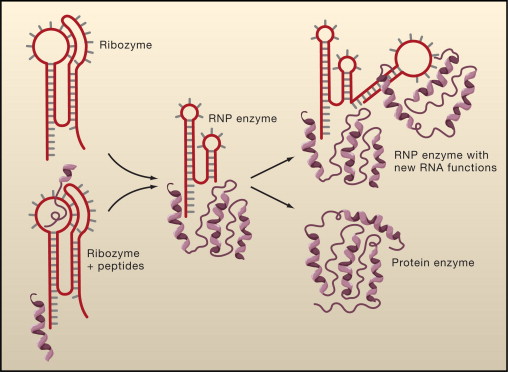 It is common to observe that one of the greatest unsolved questions of science is how life began. This is a distinct question from how the diversity of the species of living things emerged. It is well established that once life had established a self-replicating system capable of generating some variation, that evolutionary forces would kick in and could, and in fact did, create all life on Earth. But we are a long way from reverse-engineering in any detail how those first organic molecules transitioned from chemistry to life.
It is common to observe that one of the greatest unsolved questions of science is how life began. This is a distinct question from how the diversity of the species of living things emerged. It is well established that once life had established a self-replicating system capable of generating some variation, that evolutionary forces would kick in and could, and in fact did, create all life on Earth. But we are a long way from reverse-engineering in any detail how those first organic molecules transitioned from chemistry to life.
This is not a scientific question that will be meaningfully resolved with a single experiment or discovery. Answers will slowly yield over time, as they already are, and it will take decades and perhaps centuries for something approaching a complete picture to emerge. But this progress will be built one study at a time, and Japanese scientists have recently contributing a significant piece to the puzzle.
Researchers at the University of Tokyo published a study in Nature Communications in which they establish that an RNA system can spontaneously evolve complexity. RNA molecules are one of the primary candidates for the first prebiotic molecules that lead to life. RNA is a single-stranded version of DNA, a self-replicating molecule built from four bases forming two pairs. The idea is that life started with the formation of a “replicator” – a molecule that could make copies of itself. RNA is a leading candidate for being the first replicator, but DNA and proteins are also candidates. So far we have not yet been able to connect an “RNA world” with a later world comprised of DNA and proteins. It is this gap that the new research helps fill in.
Continue Reading »
Mar
15
2022
 There is an inordinance of symmetry in living structures. Perhaps this is why humans have an aesthetic predilection for symmetry – but why does life have a probabilistic predilection for symmetry? Of all the possible forms that exist, symmetrical ones are a minority, and yet evolution seems to prefer them. We might hypothesize that there is a functional advantage to symmetry, but this is not obvious, at least not as a general principle. Specific forms likely function better when symmetrical. For example, forces need to balance, when walking or flying, and symmetry achieves that. Imagine a bird with one wing much bigger than the other, or with the wings placed at different positions along the body.
There is an inordinance of symmetry in living structures. Perhaps this is why humans have an aesthetic predilection for symmetry – but why does life have a probabilistic predilection for symmetry? Of all the possible forms that exist, symmetrical ones are a minority, and yet evolution seems to prefer them. We might hypothesize that there is a functional advantage to symmetry, but this is not obvious, at least not as a general principle. Specific forms likely function better when symmetrical. For example, forces need to balance, when walking or flying, and symmetry achieves that. Imagine a bird with one wing much bigger than the other, or with the wings placed at different positions along the body.
There appears, however, to be symmetry in excess of function, and this symmetry exists as all levels of biology, down to the molecular level. There are exceptions, of course, but symmetry is the rule. Further, some symmetry is baked into evolutionary designs long before any adaptive use. Therefore we need another, non-adaptive, hypothesis to fully explain symmetry. I have long felt that there is probably a mathematical reason, although could not state it in rigorous terms. The DNA genetic code for a living organism is not a detailed blueprint. Rather it is a set of instructions to be followed. Think of it like a honeycomb beehive. There is no blueprint for the beehive, and no bee knows what it is supposed to look like. The bees follow simple rules over and over again, and the complex honeycomb pattern emerges. That is where the answer must lie.
Researchers have already put a lot of flesh on this skeleton of an idea, and a recent paper adds some further mathematical rigor. The key does lie in the use of simple algorithms to produce the complexity of life. Imagine having to describe to someone else how to create a pattern, such as with tiling a floor. You are not going to tell them where each tile exactly goes. Rather you will explain a technique or pattern that then gets repeated over and over until the space is filled. That, of course, only works if there is a simple pattern. If the ties are laid out in a mosaic creating a complex landscape, then yeah, you may need to describe where each tile goes.
Continue Reading »
Mar
14
2022
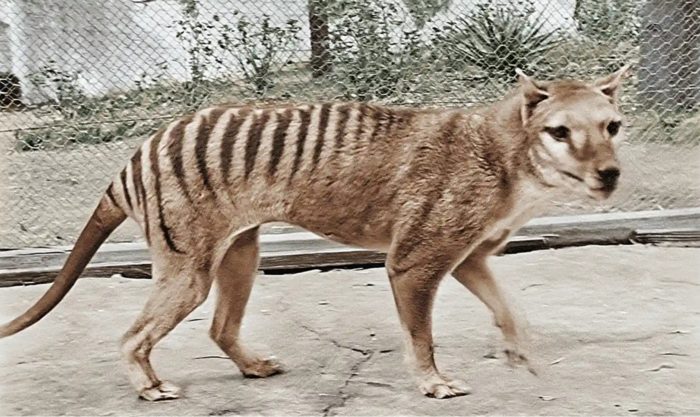 The last known thylacine, commonly known as the Tasmanian tiger, was in captivity in 1936. This marsupial predator was wiped out by human hunting. At the time Europeans colonized Australia the range of the thylacine was limited to Tasmania, but it did not survive contact with Europeans for very long.
The last known thylacine, commonly known as the Tasmanian tiger, was in captivity in 1936. This marsupial predator was wiped out by human hunting. At the time Europeans colonized Australia the range of the thylacine was limited to Tasmania, but it did not survive contact with Europeans for very long.
The thylacine is now one of the primary targets for de-extinction – literally bringing the species back from extinction using cloning technology. This effort has just received a significant boost. The University of Melbourne just received a $5 million grant to develop their Thylacine Integrated Genetic Restoration Research (TIGRR) Lab. Scientists love their clever acronyms, and I wonder how long they had to work on this one.
The researchers at the lab have a specific plan in terms of how to bring back the thylacine. They have already completed the first step, which is to completely sequence the thylacine genome. Now they need to study this genome to understand it as best as they can. They will need to synthesize a complete genome, and then place it in stem cells prepared from another marsupial. This is where the cloning process comes in. You remove the DNA from the stem cell, insert the new DNA, and then coax the cell into dividing to form an embryo. They then plan to implant the embryo into a living host, such as a Tasmanian devil, who will then give birth to a live thylacine.
The process is tricky. We have cloned large mammals before, but not of an extinct species. Also, the process is not done when we have one thylacine. The goal is to create a breeding population. That means we need many individuals, both male and female, with sufficient genetic diversity. Once they have established a breeding population in captivity, the ultimate goal is then to reintroduce them back into the ecosystem of Tasmania.
Continue Reading »
Mar
11
2022
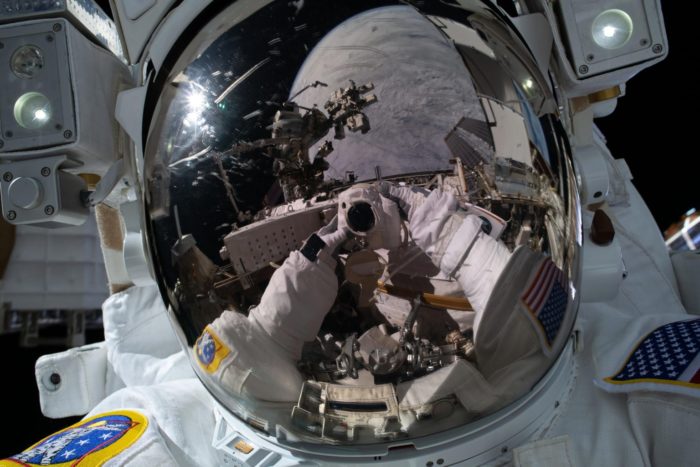 NASA recently confirmed their plans for the International Space Station (ISS) – they will keep the station operational through 2030 and then sometime in 2031 ditch it into the sea. They will be aiming for point Nemo, which is the location in the Pacific ocean that is furthest from any land, 2688 km. It is unfortunate that it is not feasible to push the station instead into a safe orbit, out of the way where it can remain as a museum of sorts. But it is best to keep low Earth orbit clear of debris as much as possible, so ditching it is the safest thing to do.
NASA recently confirmed their plans for the International Space Station (ISS) – they will keep the station operational through 2030 and then sometime in 2031 ditch it into the sea. They will be aiming for point Nemo, which is the location in the Pacific ocean that is furthest from any land, 2688 km. It is unfortunate that it is not feasible to push the station instead into a safe orbit, out of the way where it can remain as a museum of sorts. But it is best to keep low Earth orbit clear of debris as much as possible, so ditching it is the safest thing to do.
Meanwhile, the ISS has about nine years of life left and there is a lot of science planned for that time. They are currently giving the station a power upgrade, installing new batteries and equipment to allow for the addition of a new solar array to give the station more power.
One of the primary missions of the ISS is to be a laboratory for experiments on the long term effects of living in microgravity and ways to mitigate them. Right now NASA (or any other space agency) has no plans to develop true artificial gravity for their deep space missions. Essentially there are two methods for creating artificial gravity. One is constant acceleration, but we do not have the technology to develop a drive that can create significant G-forces for any significant length of time. We essentially have craft (like ion drive or perhaps solar sails) that can produce very slight acceleration for a long time. Or we have chemical rockets that can produce high acceleration for a short time. Even nuclear powered ships would spend most of their time on long trips (to Mars, for example) coasting. So this is simply not practical.
The other form of artificial gravity is rotation. There are practical limiting factors here as well. First, any rotating structure would have to be very large, on the order of a kilometer or more along its axis of rotation, in order to minimize vertigo and disorientation. This is not practical for any current spaceship design. We may have a space station that uses rotation for artificial gravity sometime this century, but likely not a space ship. Even clever designs, like having two capsules that are attached by a strong cable that, once the ship is coasting, can extend out from each other, forming a long axis that can rotate, will have significant engineering challenges. NASA’s current attitude is – not anytime in the foreseeable future.
Continue Reading »
Mar
10
2022
 There are many ways to generate energy, and as we try to wean ourselves off of fossil fuels researchers are exploring how to improve and expand upon our options. One category of energy production is bio-energy, deriving energy from a biological source. Currently this mostly comes in the form of biofuel. Plants evolved ways to make energy from sunlight billions of years ago, in the process of photosynthesis. The captured sunlight is essentially stored as high-energy molecules, and those molecules can be converted into other high energy compounds, like ethanol, that can then be burned as fuel.
There are many ways to generate energy, and as we try to wean ourselves off of fossil fuels researchers are exploring how to improve and expand upon our options. One category of energy production is bio-energy, deriving energy from a biological source. Currently this mostly comes in the form of biofuel. Plants evolved ways to make energy from sunlight billions of years ago, in the process of photosynthesis. The captured sunlight is essentially stored as high-energy molecules, and those molecules can be converted into other high energy compounds, like ethanol, that can then be burned as fuel.
The problem with growing and harvesting biofuel is that it is inefficient. The amount of energy produced per unit of land is lower than other forms of energy, arable land is in short supply and will only get shorter as our population grows. Further, the process uses a lot of energy and while we can generate net energy through biofuels, the ultimate yields can be quite low. For these reasons I don’t think biofuels will ever become a major contributor to our energy infrastructure. However, it will likely have a niche, if not to power cars than in industry, which also needs to be fed high-energy compounds for many processes. There are also opportunities to use as feedstock for biofuels organic matter that would otherwise be waste. Researchers are also working on growing microbes in vats to improve land efficiency, or growing plants in the ocean to use as feedstock. These methods will help, but we will still never be running the world on biofuels. The numbers just don’t add up.
Continue Reading »
 Dowsing is one of those pseudosciences that proves James Randi’s aphorism that such cons are often like “unsinkable rubber ducks” – no matter how often you push them down, they keep coming back. Here is yet another story of a scientist falling for dowsing and spreading this nonsense to students, law enforcement, and even in the courtroom. Arpad Voss is a forensic scientist with a PhD in anthropology. He is now the latest cautionary tale demonstrating that being a legitimate scientist is not in itself protection from also falling for pseudoscience.
Dowsing is one of those pseudosciences that proves James Randi’s aphorism that such cons are often like “unsinkable rubber ducks” – no matter how often you push them down, they keep coming back. Here is yet another story of a scientist falling for dowsing and spreading this nonsense to students, law enforcement, and even in the courtroom. Arpad Voss is a forensic scientist with a PhD in anthropology. He is now the latest cautionary tale demonstrating that being a legitimate scientist is not in itself protection from also falling for pseudoscience.
 As the number of confirmed exoplanets grows (
As the number of confirmed exoplanets grows ( Last year
Last year  As I have
As I have 
 It is common to observe that one of the greatest unsolved questions of science is how life began. This is a distinct question from how the diversity of the species of living things emerged. It is well established that once life had established a self-replicating system capable of generating some variation, that evolutionary forces would kick in and could, and in fact did, create all life on Earth. But we are a long way from reverse-engineering in any detail how those first organic molecules transitioned from chemistry to life.
It is common to observe that one of the greatest unsolved questions of science is how life began. This is a distinct question from how the diversity of the species of living things emerged. It is well established that once life had established a self-replicating system capable of generating some variation, that evolutionary forces would kick in and could, and in fact did, create all life on Earth. But we are a long way from reverse-engineering in any detail how those first organic molecules transitioned from chemistry to life. There is an inordinance of symmetry in living structures. Perhaps this is why humans have an aesthetic predilection for symmetry – but why does life have a probabilistic predilection for symmetry? Of all the possible forms that exist, symmetrical ones are a minority, and yet evolution seems to prefer them. We might hypothesize that there is a functional advantage to symmetry, but this is not obvious, at least not as a general principle. Specific forms likely function better when symmetrical. For example, forces need to balance, when walking or flying, and symmetry achieves that. Imagine a bird with one wing much bigger than the other, or with the wings placed at different positions along the body.
There is an inordinance of symmetry in living structures. Perhaps this is why humans have an aesthetic predilection for symmetry – but why does life have a probabilistic predilection for symmetry? Of all the possible forms that exist, symmetrical ones are a minority, and yet evolution seems to prefer them. We might hypothesize that there is a functional advantage to symmetry, but this is not obvious, at least not as a general principle. Specific forms likely function better when symmetrical. For example, forces need to balance, when walking or flying, and symmetry achieves that. Imagine a bird with one wing much bigger than the other, or with the wings placed at different positions along the body. The last known thylacine, commonly known as the Tasmanian tiger, was in captivity in 1936. This marsupial predator was wiped out by human hunting. At the time Europeans colonized Australia the range of the thylacine was limited to Tasmania, but it did not survive contact with Europeans for very long.
The last known thylacine, commonly known as the Tasmanian tiger, was in captivity in 1936. This marsupial predator was wiped out by human hunting. At the time Europeans colonized Australia the range of the thylacine was limited to Tasmania, but it did not survive contact with Europeans for very long. NASA recently
NASA recently  There are many ways to generate energy, and as we try to wean ourselves off of fossil fuels researchers are exploring how to improve and expand upon our options. One category of energy production is bio-energy, deriving energy from a biological source. Currently this mostly comes in the form of biofuel. Plants evolved ways to make energy from sunlight billions of years ago, in the process of photosynthesis. The captured sunlight is essentially stored as high-energy molecules, and those molecules can be converted into other high energy compounds, like ethanol, that can then be burned as fuel.
There are many ways to generate energy, and as we try to wean ourselves off of fossil fuels researchers are exploring how to improve and expand upon our options. One category of energy production is bio-energy, deriving energy from a biological source. Currently this mostly comes in the form of biofuel. Plants evolved ways to make energy from sunlight billions of years ago, in the process of photosynthesis. The captured sunlight is essentially stored as high-energy molecules, and those molecules can be converted into other high energy compounds, like ethanol, that can then be burned as fuel.




